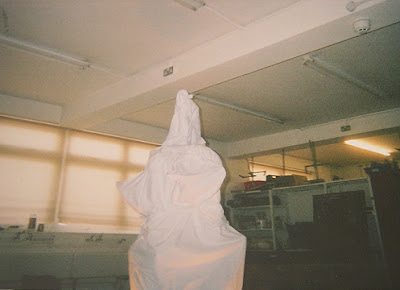





 I wanted to create more texture, so applied the paint thickly to build up layers.
I wanted to create more texture, so applied the paint thickly to build up layers. The 'copy' of Soutine built-on. I still feel it is extremely FLAT! I need to change my painting method! I want to capture the turbulent strokes like the original artist did. The actual piece is titled Side of Beef and Calf's Head. When it comes to meat paintings, I prefer the style of Jenny Saville, such as in this particular piece:
The 'copy' of Soutine built-on. I still feel it is extremely FLAT! I need to change my painting method! I want to capture the turbulent strokes like the original artist did. The actual piece is titled Side of Beef and Calf's Head. When it comes to meat paintings, I prefer the style of Jenny Saville, such as in this particular piece:
Chaim Soutine: Side of Beef and Calf's Head
I like the brush marks in Saville's because it gives a 'crisp', clean style which I really admire. But that's not to say that I don't feel Soutine's piece to be strong; with Saville's, it is quite clear that the thing being painted is dead - the pale colours indicate the coldness of death, but the vivid yellows and reds in Soutine's give off a great vibrancy and movement through the use of such 'active' brushstrokes.
Eventhough I find it difficult to copy Soutine's painting (most notably the liveliness of it) in response to really looking hard at it, it makes me see what I'm not doing right and lets me know what I can improve on just by attempting to do the same thing. In terms of where my main interest lies most between formal properties of painting, I think composition and line first, and colour second. I'm most interested, firstly, in how the image is arranged on the canvas, etc and in what style the image is constructed through looking at the lines and brushmarks made.

A second copy, trying to get the shape more accurate to the original but I prefer the tones on the first one, even if both have only just one 'base' layer each at the moment.

Copying in acrylics, with just a flat 'base' which could be built on.

A quick copy with colour wax crayons.

A pencil sketch copy.

The actual painting by Soutine.

A photocopy of the original image we had to copy.













